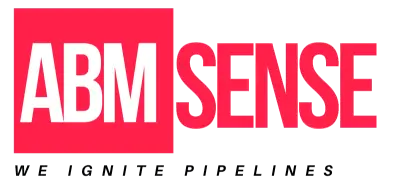What’s the Role of Google Ads in B2B Demand Generation?
What does Google Ads do in B2B demand generation?
For businesses generating leads and building brand awareness, the Google Ads platform is a powerful tool.
Especially for B2B companies looking to reach potential clients, Google Ads serves as a true workhorse.
In fact, over 70% of marketers invest in paid search.
So, what exactly is the purpose of this platform in the context of B2B demand generation?
Understanding Google Ads and B2B Demand Generation
Google Ads covers several types of advertising solutions, such as Search Ads, Display Ads, and Video Ads. Each type serves a distinct purpose, allowing businesses to customize their approaches to very specific objectives. For example, Search Ads are all about user intent. They show up right when a would-be customer is searching for a product or service, capturing the moment when someone’s interest is most definitely piqued. But, beyond that, they must be relevant. Then, there’s Display Ads, which—if we’re being frank—are kind of the opposite.
Advertising through search engines allows you to capture leads using highly targeted keywords. These short, simple phrases trigger the delivery of your ads to users who are actively searching for what you’re offering—prospects who are further down the funnel and closer to conversion than the average web user.
- Banner advertising: through graphic content, enhance the recognition of your brand.
- Video Advertisements: Capture the attention of users with ever-changing tales.
As a result, using these formats in a managed way can assist B2B firms in reaching their intended audience more efficiently. Moreover, studies indicate that firms employing Google Ads enjoy an average return on investment (ROI) of 200%. This number indicates how well the platform performs in terms of producing demand, which, in a world where business competition is so sharp, is obviously a desirable outcome.
Strategies for Effective B2B Demand Generation
For B2B demand generation, when using Google Ads, there are several effective strategies to attend to. They are:
- Optimize for Keywords: Perform research to find high-intent keywords that are relevant to your products and services, and implement them in your content.
- Ad Customization: Personalize the ad copy to speak directly to the specific discomforts of your intended audience.
- Relevance of Landing Pages: Make certain that the landing pages are streamlined for conversions, and that they are in-sync with the advertising messages.
By concentrating on high-intent keywords such as “enterprise data protection,” a cybersecurity company achieved remarkable results. In the space of three months, that firm experienced a 35% uptick in leads. Callouts and structured snippets can help in the same way as doing the right thing with keywords. These ad extensions can also increase effectiveness.
What’s the Role of Google Ads in B2B Demand Generation? A Broader Perspective
In the larger realm of B2B demand generation, Google Ads occupies a central place in the pushing along of multi-channel marketing works. When paid search campaigns are combined with other channels—such as email marketing and social media—the result is a more concentrated lead nurturing effort that tends to pay off in better overall conversion rates. In other words, Google Ads, when used in concert with other direct and indirect channels, is a source from which very many companies generate leads and otherwise tend to find new customers.
In addition, employing Google Ads to execute a remarketing strategy can efficiently re-engage users who once interacted with your brand. WordStream cites a study showing that the average Click-Through Rate (CTR) for a remarketing ad is 10 times higher than that of a standard display ad. If you want to maintain brand presence, continually directing ad leads through the sales funnel is essential. And using remarketing as one of the tools in your directing arsenal can help you do just that.
Data Analytics and Performance Measurement
In addition, utilizing Google Ads analytics can give a glimpse into the performance of the campaign and the behavior of the user. Following such things as the CTR, conversions, and CPA can help refine what was initially set as the strategy to make it more efficient and a guaranteed success. Knowing these metrics will give B2B marketers the power to not only understand but also to adjust what was set in motion to push for better results.
- Use A/B Testing: Different variations of an ad should be tested to pinpoint the elements that perform best.
- Evaluate campaign performance: When campaigns are over, look at the data and assess how successful they were based on ROI.
- Segmentation: Divide ads into segments according to the characteristics of the audience so that each viewer receives a relevant and personal message.
As a result, companies that put first data-fueled decision-making have a huge opportunity to substantially elevate their demand generation. Take, for example, a performance-driven SaaS company. They not only monitored but consistently optimized their Google Ads performance over time, which led to a 50% higher lead generation rate within six months. This is analytics in action – and in this case, in a positive direction.
Conclusion
To conclude, Google Ads is a major player in B2B demand generation, facilitating pin-pointed communication en route to the first touch and, at times, the final touch in the buyer’s journey. Ads can be tailored to very specific audiences and, through the use of extensions, can allow for very customized forms of communication to appear right alongside search results. Google Ads certainly has a place in demand generation, but a layered strategy will always serve a business well.
Explore More on us
Discover insightful blogs on our Blogging Space, check our WordPress Visitor Identification Plugin, and learn more about Account-Based Marketing.


